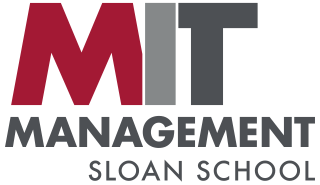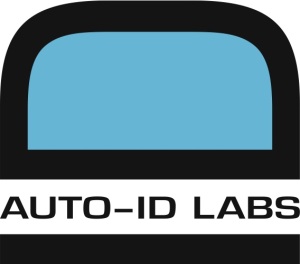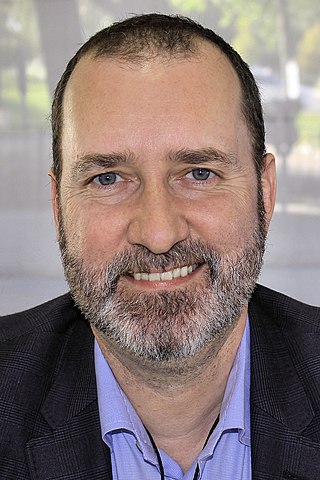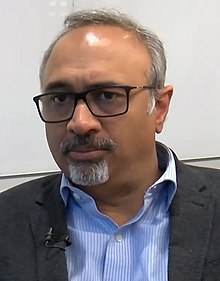
MIT OpenCourseWare is an initiative of the Massachusetts Institute of Technology (MIT) to publish all of the educational materials from its undergraduate- and graduate-level courses online, freely and openly available to anyone, anywhere. The project was announced on April 4, 2001, and uses Creative Commons Attribution-NonCommercial-ShareAlike license. The program was originally funded by the William and Flora Hewlett Foundation, the Andrew W. Mellon Foundation, and MIT. MIT OpenCourseWare is supported by MIT, corporate underwriting, major gifts, and donations from site visitors. The initiative inspired a number of other institutions to make their course materials available as open educational resources.
Radio-frequency identification (RFID) uses electromagnetic fields to automatically identify and track tags attached to objects. An RFID system consists of a tiny radio transponder, a radio receiver and transmitter. When triggered by an electromagnetic interrogation pulse from a nearby RFID reader device, the tag transmits digital data, usually an identifying inventory number, back to the reader. This number can be used to track inventory goods.

The MIT Sloan School of Management is the business school of the Massachusetts Institute of Technology, a private university in Cambridge, Massachusetts. MIT Sloan offers bachelor's, master's, and doctoral degree programs, as well as executive education. Its degree programs are among the most selective in the world. MIT Sloan emphasizes innovation in practice and research. Many influential ideas in management and finance originated at the school, including the Black–Scholes model, the Solow–Swan model, the random walk hypothesis, the binomial options pricing model, and the field of system dynamics. The faculty has included numerous Nobel laureates in economics and John Bates Clark Medal winners.

The Auto-ID Labs network is a research group in the field of networked radio-frequency identification (RFID) and emerging sensing technologies. The labs consist of seven research universities located on four different continents. These institutions were chosen by the former Auto-ID Center to design the architecture for the Internet of Things together with EPCglobal. The federation was established in 1999; the network they have developed is at the heart of a proposal sponsored by EPCglobal and supported by GS1, GS1 US, Wal-Mart, Hewlett-Packard, and others to use RFID and the Electronic Product Code (EPC) in the identification of items in the supply chain for companies. The areas of expertise range from hardware to software to business research related to RFID.

José Manuel Santana Silvestre, is a Dominican economist, specialist in Technology and Development. He is the executive director of the Dominican Republic International Commission of Science & Technology with the rank of ambassador. He is also a Research Affiliate at the Massachusetts Institute of Technology in the Department of Linguistics and Philosophy.

Kevin Ashton is a British technology pioneer who cofounded the Auto-ID Center at the Massachusetts Institute of Technology (MIT), which created a global standard system for RFID and other sensors. He is known for coining the term "the Internet of Things" to describe a system where the Internet is connected to the physical world via ubiquitous sensors.
Electronic Product Code Information Services (EPCIS) is a global GS1 Standard for creating and sharing visibility event data, both within and across enterprises, to enable users to gain a shared view of physical or digital objects within a relevant business context. "Objects" in the context of EPCIS typically refers to physical objects that are handled in physical steps of an overall business process involving one or more organizations. Examples of such physical objects include trade items (products), logistic units, returnable assets, fixed assets, physical documents, etc. “Objects” may also refer to digital objects which participate in comparable business process steps. Examples of such digital objects include digital trade items, digital documents, and so forth.
The Internet of things (IoT) describes devices with sensors, processing ability, software and other technologies that connect and exchange data with other devices and systems over the Internet or other communications networks. The Internet of things encompasses electronics, communication and computer science engineering. Internet of things has been considered a misnomer because devices do not need to be connected to the public internet, they only need to be connected to a network, and be individually addressable.

Josef Preishuber-Pflügl is an Austrian technology leader.
Punchbowl, Inc. is a social planning software developer based in Framingham, Massachusetts. The company runs Punchbowl.com, a web-based online invitations service and digital greeting cards site.
Philippe Gautier is the main author of a "book [about] the history of the understanding of the technological, economic, legal and societal stakes or issues of the "Internet of Things". This book is actually an essay on the Future Internet and points out why the contributions of both sciences of complexity and cybernetics are necessary in the conception and realization of information systems to meet the new challenges of sensory technologies - such as NFC, RFID, Barcodes, GPS, etc. - and fully open value chain. This essay discusses also the particular impacts on economics, sociology and governance, with a philosophical conclusion. He is also the founder of Business2Any, a company specialized in the conception & edition of cybernetic software, related to Distributed Artificial Intelligence (DAI), machine learning & cognitive computing for the Internet of Things.
CISC Semiconductor GmbH defines itself as “design and consulting service company for industries developing embedded microelectronic systems with extremely short Time-To-Market cycles.” The company started in 1999, working in the semiconductor industry, but soon expanded its field towards the automotive branch and further extended business towards the radio frequency technology (RFID) sector in 2003. Since then, CISC gained significant experience and expertise in RFID, developing an own business segment and highly sensitive measurement equipment to test and verify RFID systems for different industries. Representatives of CISC Semiconductor are actively working on and contributing to worldwide standardization of future technologies like RFID, in different standardization organizations. This effort brings CISC into the position of being a leader in research and development, and thus being able to be “one step ahead of innovation”. As of 2011 CISC Semiconductor is in a globally leading standardization position for RFID testing by providing the convener of ISO/IEC JTC1 WG4/SG6 on “RFID performance and conformance test methods“, as well as GS1 EPCglobal co-chairs for performance and conformance tests.

The ucode system is an identification number system that can be used to identify things in the real world uniquely. Digital information can be associated with objects and places, and the associated information can be retrieved by using ucode.
MITx is the massive open online course (MOOC) program at Massachusetts Institute of Technology. A constituent program of MIT's Office of Digital Learning, MITx produces MOOCs from MIT departments and faculty. Prior to 2U's acquisition of edX, MITx courses appeared there. After the acquisition, courses appeared on MIT's own site. MITx also supports residential experiments with scalable learning technologies and research on digital learning. MOOCs offered through edX by MITx are open-enrollment and free to take. In September 2012, edX and MITx introduced the option to receive an ID verified certificate on some courses.

European Alliance for Innovation (EAI) is an international professional community and a nonprofit organization. The goal of EAI is to empower the global ICT research and innovation community, and to promote cooperation between European and International ICT communities.
Joshua Siegel is an American mechanical engineer, inventor, and entrepreneur. As of January 2019, he is an assistant professor of computer science and engineering at Michigan State University. Previously, he was a research scientist at MIT, the lead instructor of MIT's Internet of things Bootcamp, a parallel entrepreneur and founder of the connected car startup and consultancy CarKnow LLC as well as the vehicle prognostic startup DataDriven. His research areas include connected vehicle technologies, pervasive sensing, and secure and efficient architectures for connectivity. Siegel and his companies have been recognized with several awards for his work developing platforms to collect and analyze vehicle data, including the Lemelson-MIT Student Prize and the MassIT Government Innovation Prize.

Dominique "Dom" Guinard is the CTO of EVRYTHNG. He is a technologist, entrepreneur and developer with a career dedicated to building the Internet of Things both in the cloud and on embedded Things. He is particularly known for his early contributions to the Web of Things along with other researchers such as Vlad Trifa, Erik Wilde and Friedemann Mattern. Guinard is a published researcher, a book author and a recognized expert in Internet of Things technologies
The industrial internet of things (IIoT) refers to interconnected sensors, instruments, and other devices networked together with computers' industrial applications, including manufacturing and energy management. This connectivity allows for data collection, exchange, and analysis, potentially facilitating improvements in productivity and efficiency as well as other economic benefits. The IIoT is an evolution of a distributed control system (DCS) that allows for a higher degree of automation by using cloud computing to refine and optimize the process controls.

William Boone Bonvillian, a Fellow of the American Association for the Advancement of Science (AAAS), is a specialist on innovation and technology policy. He is a Lecturer at the Massachusetts Institute of Technology (MIT), teaching innovation policy courses in the departments of Science, Technology and Society and Political Science, and serves as a Senior Director for special projects at MIT Open Learning researching workforce education. He was named Fellow of the American Association for the Advancement of Science for his work in 2011, and he received the IEEE's award for distinguished public service in 2006.
MIT Open Learning is an Massachusetts Institute of Technology (MIT) organization, headed by Sanjay Sarma, that oversees several MIT educational initiatives, such as MIT Open CourseWare, MITx, MicroMasters, MIT Bootcamps and others.









